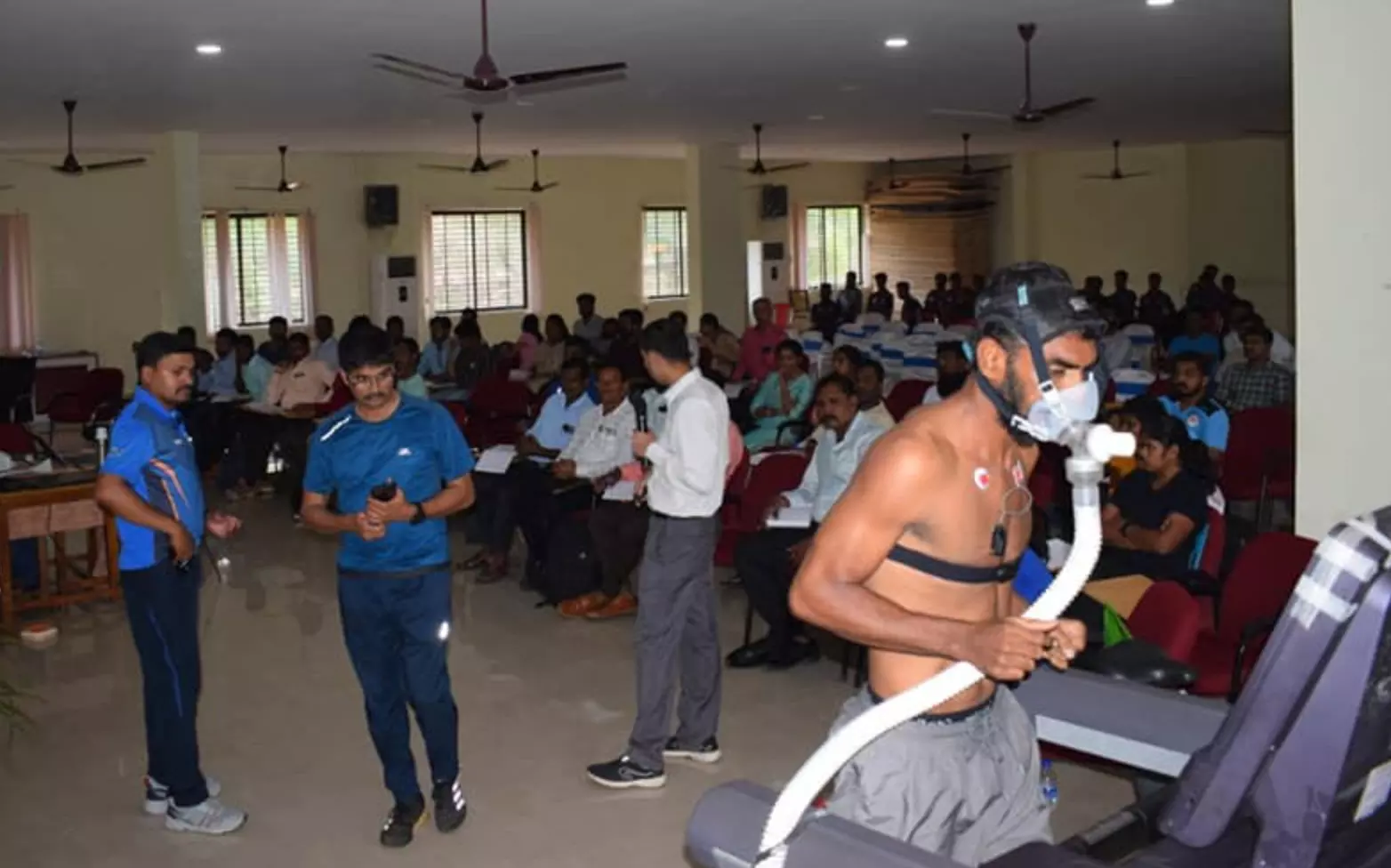Sports Training
How India is waking up to the 'sports science revolution'
India's relationship with sports science is one that dates back to the 1980s, but it is only in the last few years that athletes have started reaping the benefits, explains a leading sports scientist.

A workshop on 'Sports Sciences Research' being held this year at Mangalore University in Karnataka. (Facebook/SAI NERC, Imphal)
In the olden days, a sport was usually an affair wholly between the 'guru' and the 'shishya'. Nowadays, a third and very important entity - Sports Science - has entered the fray of India's sports ecosystem.
The Bridge spoke to Subrata Dey, a sports scientist specialising in exercise and sports physiology posted at the Sports Authority of India's North East Regional Centre in Imphal, Manipur, to understand the nitty-gritty of this discipline.
Having worked with the likes of recent Commonwealth Games medallists like Achinta Sheuli, Jeremy Lalrinnunga and Amit Panghal, Dey explained how institutionalised training in sports science in India is something that has roots in the 1980s but is something that athletes have been reaping the benefits of only in the last three-four years.
"Sports science is a discipline like any other science. A big umbrella term that studies the human body, its overall activity, and how it helps in the performance of athletes in order to nurture them," Dey said.
Biomechanics, Biochemistry, Psychology, Strength and Conditioning, Nutrition, Exercise are some of the applied disciplines coming under the umbrella of Sports Science. Sports Anthropometry, which studies the size and structure of a human body to analyse performance, is another important aspect, which has only recently started in the country. Research in this field that is currently ongoing is to compare the body structures of international athletes with those of Indian athletes.
Growth of Sports Science
The European countries were the first to pioneer the discussions surrounding sports science. It was Harvard University's lab that then started research on human physiology.
India's relationship with sports science is one that dates back to the 80s but has taken some time to blossom. The Sports Science department at the National Institute of Sports, Patiala was introduced back in 1983 which still runs strong and is responsible for churning out ace scientists.
"Just like you can do your undergraduate studies in fields like Mathematics, Chemistry, etc, similarly you can also do so in Sports Science. Many such universities and institutes exist that offer these courses," Dey informed.
In 2018, the NCSSR (National Centre of Sports Sciences and Research) scheme was introduced by the central government, under which a group of universities and medical colleges were provided with funds to begin sports science and medicine courses.
An athlete undergoes Sports Anthropometry at a national CSS centre (CSS)
Recently, there has been a huge development in India with regard to sports science through the inclusion of sports scientists under support staff at the 23 NCOEs (National Centres of Excellence).
"The subject hasn't been advertised or talked about enough in India up until now. We, as laymen, always knew that it was the coach who was responsible for the athlete's success. Nowadays, there is a whole team of support staff, especially sports scientists, who work tirelessly," Dey, who heads the Physiology department at the Imphal centre, said.
Coach - biggest enemy of a sports scientist?
Before sports science had even entered Indian soil, athletes and sports team across the country were still winning and performing at the highest level. "For example, the hockey team used to win so much without sports science. Now, not so much despite the presence of science. Why is it so?" Dey asked.
He promptly answered his own question. "The coach is a huge influence on the athlete. If they do not implement the science we suggest into their training regime, then the gap in communication will remain."
Dey opines that now the times are changing as coaches are as scientific as the scientists themselves. However, earlier this was not the case. Maybe it was the lack of manpower or the stereotype around science in general which proved to be an impediment, he said.
"In those times, maybe there were 10 scientists, whereas now the number has increased to say 300. Slowly, there is a shift in mindset which is clearly visible. Even after the Tokyo Olympics, the hockey officials congratulated all the nutritionists, physiologists, and psychologists," Dey added.
The track-and-field area at the Imphal SAI centre
Sports Science helping Manipur become a powerhouse
During the pandemic, when everything came to a stop at Manipur's SAI regional centre, the scientists continued to do good work by spreading knowledge and awareness of the discipline via online classes.
"After training resumed from October last year, I noticed that our centre is one of the leading hubs for sports disciplines. Strength, endurance, team, individual, combat, non-combat - we have all sorts of exposure to provide for the athletes."
According to Dey, Manipur has always been a front-runner in terms of strength and power, especially in sports like boxing, weightlifting, and hockey. The environment and the sporting culture in and around Manipur is a huge contributing factor as well.
"In my 15-16 month stay here so far, I have seen that there are certain disciplines in which Manipuri athletes dominate. Athletics too has been a blossoming area here with the recent gold medal at the Khelo Indian games. We work with Huidrom Bhumeshwory, oneof the most promising athletes."
"Similarly, fencing, weightlifting, and wushu are other sporting disciplines that are on the rise here in Manipur."
Dey believes that through the effective co-ordination between coaches, athletes, and sports scientists, the Imphal centre can very well help nurture budding sportspersons and show the way for the rest of the country.
